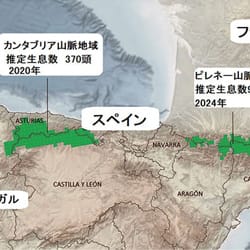It’s nearly impossible to find a place to stay during the fair, and the Milanese will tell you that they can rent anything out to visitors—even a tent in their yard or a futon in their hallway. Hotels have been known to charge four times their normal rates.
Fond of careful preparation and planning, the Japanese probably take care of their hotel reservations for next year as soon as the current fair kicks off—but people from other countries who, like me, tend to go with how they feel in the moment, are most likely left scrambling about just before the event unable to find a place to stay.
If they can’t find anything in the city, they’ll usually widen their search and try to find something further out in the suburbs. But Italy isn’t a train-friendly country like Japan, so there are fewer of them, with less convenient schedules and dirtier cars than back home.
You might think that people with international driver’s licenses could rent a car and get around that way. It even sounds romantic to say you’ve taken a drive through Italy, right? If you can get used to driving on the right side of the road in a left-hand drive vehicle, the rest should take care of itself. And the navigation apps in your phone take the guesswork out of getting around, even in a foreign country.
Now that I really think about it, it’s the apps that are going to keep you off the downtown streets that are closed to passenger vehicles. In the days before navigation systems were widely available, you’d end up running into one of these streets and getting on it before you even had time to process the information on the signs.

But even with modern technology, getting around Milan in a car is no easy feat—especially in the middle of the city. “Area C” restricted zones are everywhere, and except for certain types of vehicles, it costs money to get into them on weekdays between 7:30 a.m. and 7:30 p.m. I’m kind of a spacey person, so I’ll just find myself in them before I know it. But gone are the days when I’d be shocked by bills arriving at my house, since they now have a system that automatically withdraws the funds from your bank account. I have mixed feelings about it, though it does save me the hassle of having to stop by the post office to pay my fine for breaking the law.
Then there’s the matter of street parking in Milan. These days it’s all done by app of course, which makes things quite easy. Many of my coworkers park illegally and don’t pay, I guess by looking around and concluding that nobody will be by to check while they’re there. They must have some sixth sense about it.

But in neighboring Switzerland, that laid-back approach to street parking will get you nowhere.
The system there is as nerve-racking as it is impressive. At first, it looks just like any other normal street parking situation—you simply park your car between the white lines on the road. But don’t start thinking you’re safe just because you’ll be back from your errand in two or three minutes. There are pressure plates below the asphalt, and you have to go to the nearest parking meter or use the app to select your zone number and pay. If you don’t, the pressure plate will alert the parking enforcement center and the police will come.
It’s pretty easy to love a laid-back country like Italy.






























































